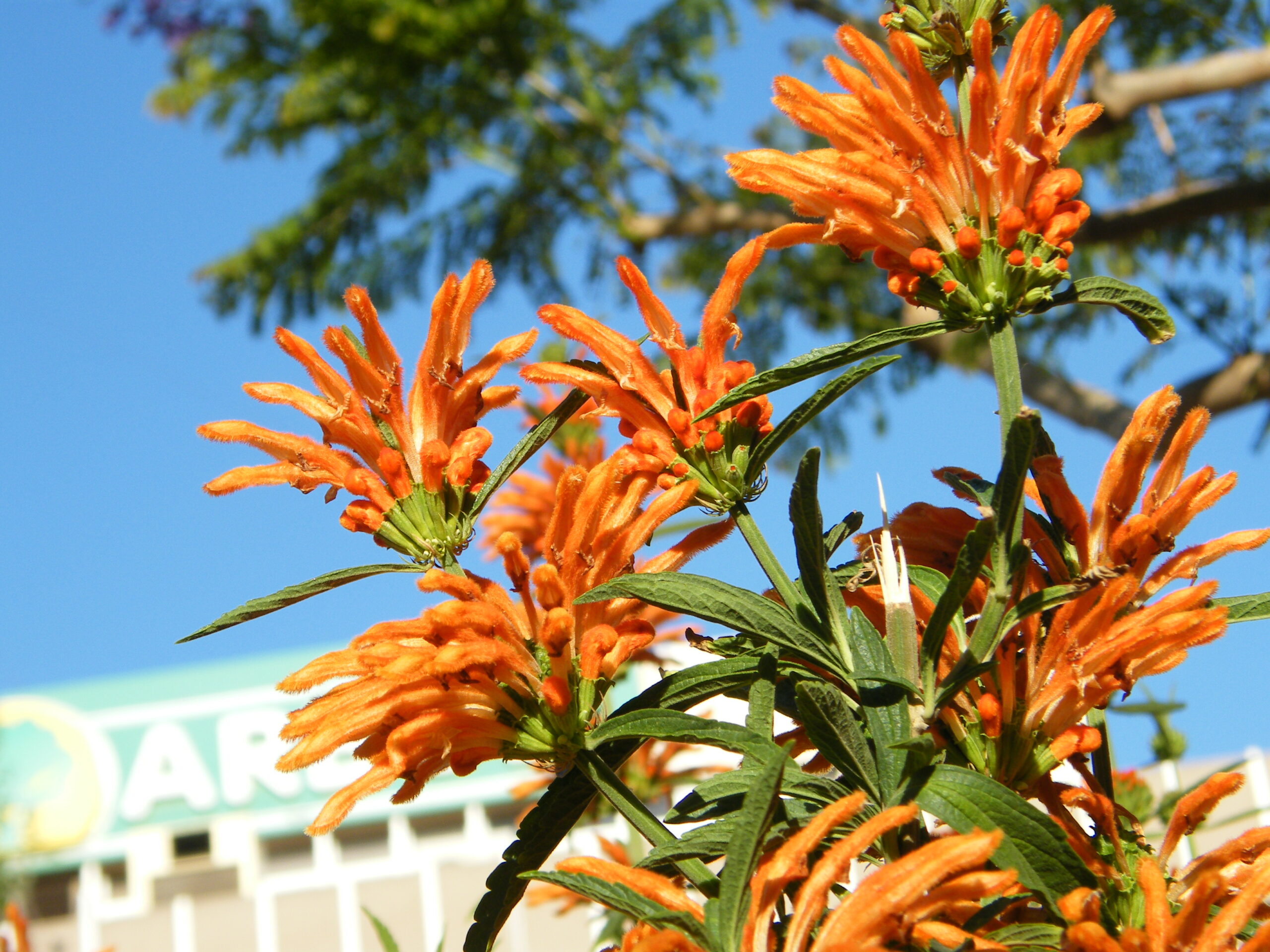Wild dagga (Leonotis leonurus), also known as lion’s tail or wild cannabis, is a flowering plant native to South Africa. The colorful tubular flowers are traditionally used for their mild euphoric and relaxing effects. While wild dagga is not related to cannabis, some of the active compounds are thought to interact with cannabinoid receptors in the brain, producing a subtle calming high 1. The effects are considered much milder than cannabis.
Brewing Wild Dagga Tea
To brew wild dagga flowers as an herbal tea:
- Start with 1 teaspoon of dried wild dagga flowers per cup of water. Adjust the amount to your personal taste and desired strength.
- Bring the water to a boil and remove from heat.
- Add the dried flowers to the hot water and allow to steep for 10-15 minutes. The longer the steeping time, the stronger the tea will be.
- Strain out the plant material and enjoy your wild dagga tea. You can add honey or other herbs to improve the flavor if desired.
The typical dosage for wild dagga tea is 1-2 cups per day. Start with a lower amount and increase gradually to assess your personal tolerance and sensitivity. The effects are usually felt within 30 minutes of drinking the tea and may last for a few hours 2.
Smoking Wild Dagga
Another popular way to use wild dagga is smoking the dried flowers. To prepare wild dagga for smoking:
- Make sure your wild dagga flowers are completely dried. You can hang the fresh flowers to air dry them, or use a dehydrator on a low setting.
- Once fully dry, crush or grind the flowers into smaller pieces. You can use your hands, scissors, a dry herb grinder, or even a coffee grinder designated for herbs.
- The crushed or ground flowers can then be smoked in a pipe, water pipe, or rolled into a cigarette using rolling papers. Some people like to mix wild dagga with other smoking herbs like damiana, mugwort, or raspberry leaf.
- Use a screen in pipes to prevent plant matter from being sucked through. Start with a few shallow puffs and wait a few minutes to feel the initial effects before continuing to smoke.
The dosage for smoking wild dagga varies depending on factors like the potency of the flowers and personal sensitivity. A typical range is 50-200 mg of dried flowers per session 1. It’s best to start low and go slow. The effects come on within minutes of smoking and may last 1-2 hours.
Making a Wild Dagga Tincture
To make a wild dagga tincture:
- Fill a glass jar about 1/2 to 3/4 full with dried wild dagga flowers.
- Pour your alcohol of choice over the flowers until they are completely covered. 80-100 proof alcohol like vodka works well. For an alcohol-free option, use food-grade vegetable glycerin instead.
- Seal the jar tightly and store it in a cool, dark place. Let it infuse for at least 2 weeks, shaking the jar gently every day or two.
- After 2-4 weeks, strain the liquid through a coffee filter or cheesecloth to remove the plant material. Store your finished tincture in a dark glass dropper bottle.
The typical dosage for a wild dagga tincture is 2-4 mL taken 1-3 times per day 3. Start with a lower dose and frequency and adjust as needed. Tinctures can be taken directly under the tongue or mixed into tea or juice. The effects may be felt within 15-45 minutes and last for a few hours.
Using Wild Dagga as Incense or in Aromatherapy
Wild dagga also works well as an incense or in aromatherapy. To use it as an incense, simply sprinkle the dried flowers over a charcoal disc in an incense burner and enjoy the fragrant smoke. You can also add a few drops of the essential oil to a diffuser or oil burner. The aroma is said to be calming and uplifting.
Whichever method you choose, it’s important to obtain your wild dagga flowers from a reputable source. Look for dried flowers that are fragrant and have retained their vibrant colors, indicating they were harvested and dried with care. Start with a low dose to see how you react before slowly increasing the amount. While wild dagga is generally considered safe, it can interact with medications and may not be appropriate for everyone. Consult your healthcare provider if you have any concerns.
Conclusion
In summary, wild dagga flowers offer a variety of enjoyable consumption methods, whether you prefer sipping a soothing herbal tea, relaxing with a pleasant smoke, or using a convenient tincture. Its subtle mood-elevating and calming effects have made wild dagga a popular choice among herb enthusiasts looking for a milder, legal alternative to cannabis.

